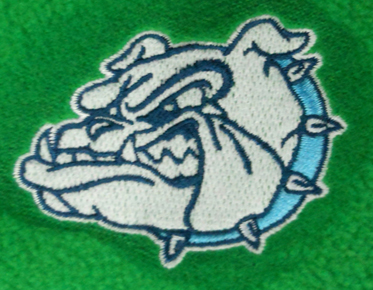Abstract Vector Art Conversion: Breaking Traditional Forms and Unleashing Creative Freedom
In the realm of digital art, the evolution of vector graphics has paved the way for new forms of expression. While traditional vector art often adheres to defined shapes and structures, the rise of abstract vector art challenges these conventions, offering artists a canvas to break free from traditional forms. In this blog, we'll delve into the world of abstract vector art conversion, exploring how it transcends boundaries, fosters creativity, and opens doors to limitless artistic possibilities.
Understanding Abstract Vector Art
1.
Defying Conventional Representations:
● Abstract Art Essence: Abstract art, in its essence, seeks to break away from realistic
depictions. It emphasizes shapes, colors, and forms that may not directly
represent recognizable objects.
2.
Vector Art in the Digital Realm:
● Vector Graphics Foundation: Vector art, characterized by paths and shapes instead of pixels, is the perfect medium for abstract expression. Its scalability and versatility make it an ideal choice for artists pushing the boundaries of traditional representation.
Abstract Vector Art Conversion:
Liberation of Form
1.
Breaking the Mold:
● Freedom from Constraints: Traditional vector art often adheres to defined outlines and
structures. Abstract vector art conversion liberates artists from these
constraints, allowing for fluid and unconventional shapes.
2.
Dynamic Forms through Path Manipulation:
● Path Tools and Nodes: Vector software tools provide the ability to manipulate paths and
nodes. Abstract vector artists leverage these features to create dynamic and
fluid forms, breaking away from rigid lines.
3.
Embracing Color Vibrancy:
● Bold Color Palettes: Abstract vector art often thrives on vibrant and bold color choices. Artists can experiment with gradients, blends, and patterns to infuse energy and life into their creations.
The Role of Software in Abstract
Vector Art Conversion
1.
Adobe Illustrator and Beyond:
● Illustrator's Versatility: Adobe Illustrator, a popular vector graphics
editor, remains a go-to tool for many abstract vector artists. Its
comprehensive features, such as the Pen tool and Pathfinder, empower artists to
experiment with form and structure.
2.
Specialized Vectorization Tools:
● Advanced Vectorization Software: For artists seeking to convert existing images into abstract vector art, specialized vectorization tools come into play. These tools adapt to the intricacies of abstract designs, preserving their unique characteristics.
Techniques for Creating Abstract
Vector Art
1.
Pen Tool Mastery:
● Precision and Fluidity: The Pen tool in vector software allows artists to create precise lines
and curves. Mastery of this tool is crucial for achieving both precision and
fluidity in abstract vector art.
2.
Gradients and Blends:
● Depth and Dimension: Abstract vector art often thrives on the illusion of depth and
dimension. Gradients and blends are powerful tools for creating smooth
transitions and adding a three-dimensional quality to the artwork.
3.
Layering and Overlapping Elements:
● Complexity through Layers: Abstract vector art benefits from layering and overlapping elements.
This technique adds complexity and visual interest, inviting viewers to explore
the depths of the artwork.
4.
Experimenting with Brushes:
● Expressive Brush Strokes: Abstract art is inherently expressive, and vector brushes allow artists to experiment with varied stroke styles. From calligraphic brushes to scatter brushes, each stroke contributes to the overall dynamism of the artwork.
Abstract Vector Art in Various
Contexts
1.
Digital Illustrations:
● Expressive Narratives: Abstract vector art finds a place in digital illustrations, offering a
unique way to convey emotions and narratives without relying on traditional
representations.
2.
Logo Design and Branding:
● Unconventional Branding: Abstract vector art is increasingly embraced in logo design and
branding. It offers a departure from literal imagery, allowing brands to
communicate identity and values in a more abstract and open-ended manner.
3.
Print and Poster Art:
● Eye-Catching Posters: Abstract vector art's vibrant colors and dynamic forms make it a popular choice for print and poster art. Its ability to capture attention and convey complex ideas in a visually striking manner is unparalleled.
Challenges and Considerations in
Abstract Vector Art Conversion
1.
Balancing Chaos and Harmony:
● Maintaining Cohesiveness: Abstract vector art often dances on the edge of chaos and harmony.
Achieving a balance where the elements coalesce into a cohesive whole is a
challenge that artists embrace.
2.
Preserving Intentionality:
● Purposeful Design Choices: While abstract art celebrates spontaneity, artists must still make intentional design choices. Every stroke, color, and form should contribute to the overall intentionality of the artwork.
Case Study: Abstract Vector Art
in Digital Campaigns
Scenario:
● Digital Campaign Redesign: A digital marketing agency decides to revamp its online presence with a
fresh visual approach.
Traditional
vs. Abstract Approach:
● Traditional Elements: The initial design featured conventional images and icons representing
the agency's services. The redesign shifted toward abstract vector art to evoke
creativity and modernity.
Impact
and Engagement:
● Visual Impact: The abstract vector art redesign garnered attention and engagement, conveying the agency's commitment to innovation. Viewers were drawn to the dynamic and expressive nature of the artwork.
Conclusion: Unleashing Boundless
Creativity with Abstract Vector Art
Abstract vector art
conversion represents a departure from the conventional, a leap into the
boundless realm of creativity. It allows artists to break traditional forms,
embrace fluidity, and communicate in ways beyond the confines of literal
representation. Whether used in digital illustrations, branding, or print,
abstract vector art injects energy, dynamism, and a sense of the avant-garde
into the visual landscape. So, for artists seeking to unleash their creativity
and challenge artistic norms, abstract vector art is not just a technique—it's
a pathway to uncharted artistic territories.



